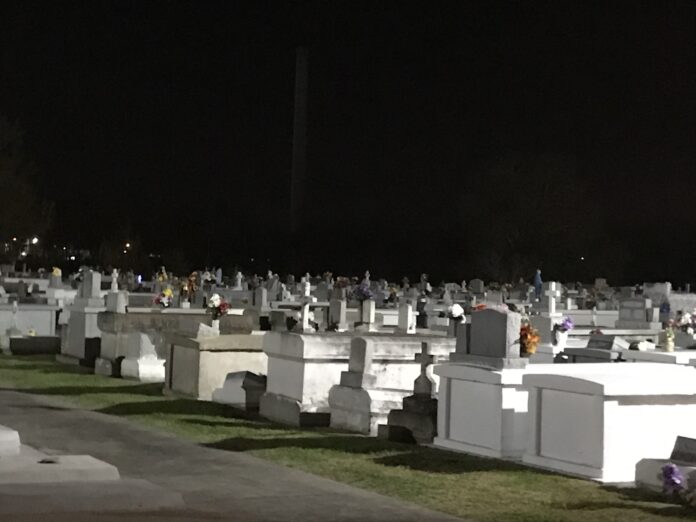 The Tulare Irrigation District held its board of directors meeting on Tuesday, January 12, 2021 remotely by Zoom. It was a cold and foggy morning in parts of the Valley but no rain. Director Mike Thomas tuned in but his screen shot was a blurry greenish/yellow. Like many of us he placed tape over the camera. That was something Mark Zuckerberg advocated. Even though he’s on my stink list at the moment it sounds like sage advice. Take that MZ. If you don’t have tape to put over the camera at least remember to trim your nose hair.
The Tulare Irrigation District held its board of directors meeting on Tuesday, January 12, 2021 remotely by Zoom. It was a cold and foggy morning in parts of the Valley but no rain. Director Mike Thomas tuned in but his screen shot was a blurry greenish/yellow. Like many of us he placed tape over the camera. That was something Mark Zuckerberg advocated. Even though he’s on my stink list at the moment it sounds like sage advice. Take that MZ. If you don’t have tape to put over the camera at least remember to trim your nose hair.
Public Comment
Chairman David Bixler called the meeting to order at 9:00am. The first item was public comment. Thomas said each year for his granddaughter’s birthday they go to the Pixley Wildlife Preserve to watch the Sand Hill Cranes fly in at dusk. He said someone has planted wall to wall almonds in white area. He said there are miles and miles of one year old  wwalmonds. He said there is now a dam on the Tule River channel. Not a culvert, just a dam. If those trees are going to survive they are going to have to pump the aquifer for 20 years. That’s about how long an almond tree will produce. Just in time bail on SGMA after mining the aquifer. Director Dave Martin, speaking as a member of the public said the folks farming that property regularly have lunch with Governor Gavin Newsom. He invited everyone and anyone to come by his shop have a beer and sign a recall petition. Someone asked if they bring a six pack can they sign it six times.
wwalmonds. He said there is now a dam on the Tule River channel. Not a culvert, just a dam. If those trees are going to survive they are going to have to pump the aquifer for 20 years. That’s about how long an almond tree will produce. Just in time bail on SGMA after mining the aquifer. Director Dave Martin, speaking as a member of the public said the folks farming that property regularly have lunch with Governor Gavin Newsom. He invited everyone and anyone to come by his shop have a beer and sign a recall petition. Someone asked if they bring a six pack can they sign it six times.
Water Report
Water Master Marco Crenshaw said it’s still early but he has his doubts this will be a wet year. The Blob is still hanging out off the west coast. That’s a blob of warm water that causes the jet stream to push storms north of California. Today’s snowpack is at 33 percent of normal for this time of year. He said he’d rather not present the rain totals. It’s just a sliver of normal for the Valley. TID supplies are steady, low but at 15 cfs not a lot is being used. Only enough for two or three turnouts in the system. He hopes to bring better numbers next month but there isn’t anything exciting forecasted. General Manager Aaron Fukuda said the district is working a banking program that can be brought to the board for years such as this.
Superintendent
Wayne Fox gave his report saying he’s been around long enough to know one big storm can turn things around and he’s hopeful. Fox and his crew have been able to get a great deal of the off season maintenance operation tasks completed. He had a small slip of the tongue when he said they’ve been working with the City of Tulare to clean up the Homeless Basin. The nomads are attracted to district infrastructure all over the Valley. All over the state really.
Fox reported TID is using very safe and clean herbicide and mowing to clean up the canals. The crew has pulled sluice gates and had them galvanized. I guess they have to do that every 25-years or so. Some parts of the system collect more silt than others. Crews have been able to come in and stockpile the sand. Martin asked Fox about pulling old pipe and using it for rip rap and such. Fox said they bust most of it up provided there isn’t too much rebar. He asked if anyone knows of a need to get rid of old concrete to get in touch with him.
Finances
Controller Kathi Artis gave her report saying TID had to pay Friant Water Authority and San Luis Delta Mendota Water Authority more than $1.7 million for Central Valley Project surface supplies, if I heard correctly. I didn’t download the board packet as it wasn’t available on the TID website. They may have emailed me a pdf. TID is really good about that but I’m not always good about saving the attachments. I can summarize Artis’ report by saying there was nothing out of the ordinary. There rarely is anything out of the ordinary at water entities. Farmers are frugal, generous but frugal. The special district is so local it has to keep clean for the most part. And of course the vast majority of staff and  directors are honest. Thomas was concerned about the reserves dropping too far. Fukuda said there is still three to four million dollars of income from last year that is lagging. He said getting the collections up to speed is part of the priority of the district’s strategic plan. Director Rick Borges said the percentage of budget used is way out of whack. Fukuda and Artis will double check the program’s equation to be sure the calculation is gathering data from the correct cells. Like I wrote above they keep a pretty good eye on the finances. Unlike some cities and counties and perhaps in the near future – states, you don’t see water related districts going belly up. The board voted to pay its bills and approve the report.
directors are honest. Thomas was concerned about the reserves dropping too far. Fukuda said there is still three to four million dollars of income from last year that is lagging. He said getting the collections up to speed is part of the priority of the district’s strategic plan. Director Rick Borges said the percentage of budget used is way out of whack. Fukuda and Artis will double check the program’s equation to be sure the calculation is gathering data from the correct cells. Like I wrote above they keep a pretty good eye on the finances. Unlike some cities and counties and perhaps in the near future – states, you don’t see water related districts going belly up. The board voted to pay its bills and approve the report.
Also, Fukuda reported a new all-terrain vehicle and trailer to haul it around for surveying and such. The costs are being shared by Stanford University as part of a grant funded study. The last little bit of the financial report was hiring Cuttone & Maestro for the audit. You have to replace your auditor every few years but you don’t have to replace your firm. Different CPAs from the same firm can audit a public agency over and over again. I did not know that.
Assessment Report
Fukuda said Beth Holmes had a death in the family and wasn’t able to give the report today. Our prayers to Beth and her family. Fukuda said some growers reported during the holidays the Post Office has been so busy some of the assessment payments were not post marked on the day they were mailed, sometimes for several days triggering the late fee.  Fukuda investigated and verified the Tulare PO wasn’t able to stay on top of dating the envelops. The PO wouldn’t provide a letter stating that but kept pointing to its website. He consulted with attorney Alex Peltzer about how to deal with this. Instead of changing the deadline date, instead of unfairly imposing a late fee, TID will accept checks dated before the deadline provided it arrived before the end of the year. The board was OK with this considering the China virus has discombobulated things including the post office. More than two dozen landowners fell into this category.
Fukuda investigated and verified the Tulare PO wasn’t able to stay on top of dating the envelops. The PO wouldn’t provide a letter stating that but kept pointing to its website. He consulted with attorney Alex Peltzer about how to deal with this. Instead of changing the deadline date, instead of unfairly imposing a late fee, TID will accept checks dated before the deadline provided it arrived before the end of the year. The board was OK with this considering the China virus has discombobulated things including the post office. More than two dozen landowners fell into this category.
Engineering
Fukuda gave Jeremy Barroll’s engineering report since Barroll was meeting with paleontologists* at the McKay Point project. Evidently the bureaucrats are worried the burial grounds of prehistoric lizards could be disturbed. Fortunately CEQA was there to prevent such a monstrous desecration. There was a water leak at a TID canal with a railroad crossing over it and in conjunction with Provost & Pritchard TID has hired Olsson Engineering – Nebraska? – I don’t know where they’re from but they have a lot of experience working with the railroads.
Fukuda gave the board a virus update saying last week there were seven TID staff members in quarantine. That’s about 30 percent of everyone working there. Construction will be slow for a while. TID found On-Site Health & Safety which offers on the spot rapid tests for the virus. And they do office calls. They can test and determine if someone has the itis or not. If not they can right back to work. If someone tests positive but no symptoms show, they have to stay away for seven days.
Someone asked Fukuda were TID falls on the vaccination prioritization. The answer is we’ll know more after the vaccine rolls out but hopefully no later than mid-summer.
SGMA
Fukuda said Matt Klinchuch, P&P and his team did above and beyond working through the holidays to get the Prop 68 grant application in on time. There’s reason for hope.
Three applicants for the GM position at Mid Kaweah GSA have moved up the evaluation list and there may soon be a new name on the letterhead. The Kaweah Water Foundation Advisory Committee met last month and things are moving forward.
Friant
Fukuda said Cliff Loeffler is the new Chairman and Edwin Camp is vice chair of the Friant Water Authority. The even bigger news is an agreement was reached with the Eastern Tule GSA to pay in part for subsidence corrections. Like more than $100 million. And, there was more than $200 million in a recent federal bill for Friant Kern Canal repairs. Borges is TID’s FWA representative and said a percentage of the federal money has to be repaid, like half of it I think. But that’s another $100 fronted to get things rolling. Fukuda said the project has been divided into smaller, bite sized parts to pay off the subsidence project in easier installments. The federal money will be handled by the US Bureau of Reclamation. Martin asked if the Harris/Biden administration could take this money back. Fukuda said that’s a good question but since the FKC is moving water to disadvantaged communities and crops are carbon sinks – so the project is green. Hopefully Washington DC will agree. The good news is this money is already in the Bureau’s budget and it would be disruptive to remove it. There was no legislation report from DC.
Preliminary 2021 Budget
The budget process for 2021 started in late November and the revenue numbers were built on a slightly wetter year model it’s shaping up to be. Two things happened in 2020, it was wetter than expected and the power plant on the Kaweah sold so that helped boost last year’s income. Fukuda said he projects a $2 million shortfall this year. He was hoping to get 100,000 a/f of surface water into the district this year and if it stays dry some of the costs associated with bringing this water will go up. The draft budget is a little more than $8 million of income this year. Fukuda then went over the expenses and TID switched from Bank of America to Citizens Business Bank and that’s a highlight of expense reductions. The expenses are estimated to be $8 million. There’s about $1.5 million needed to buy equipment this year.
Borges said selling the power plant will remove a half million dollars or more of the district’s income from power sales. He said Thomas is right TID needs to come up with something to keep from running into the rocks. Fukuda said they’re looking at a possible 218 election this fall. Director Scott Rogers asked about the Seaborne Property. Will it produce any revenue or is it just an expense? Fukuda said there will be some royalty payments coming to the district from the property. The board approved the preliminary budget so it will become a draft budget and then a real budget someday.
Other Matters
Next the board considered Resolution No. 21-01 Appointments and Proxies for 2021. This was TID officers, committee positions and all the entities it had representation on. There is actually a couple of dozen slots to be filled by the five directors. It sounded like all the seats will remain the same. There was also a report of action taken in closed session last month. The board voted to purchase the Seaborne property.
Directors Reports
Borges started by saying the Kaweah Reservoir is about as low as it has ever been. There are DWR snow survey stations in the Sierra Nevada Mountains that are falling apart. The ones in the Kaweah watershed are mostly in national parks so helicopters can’t fly in. It  makes it difficult to repair the sensors and read them if they are repaired. Borges also said the Kaweah St. John River Association has been using the Hot Spot Ag sensor systems and he’s using it on his own farm now. He said everyone is happy with it.
makes it difficult to repair the sensors and read them if they are repaired. Borges also said the Kaweah St. John River Association has been using the Hot Spot Ag sensor systems and he’s using it on his own farm now. He said everyone is happy with it.
Martin said there are 301 members now belonging to the Kaweah Basin Water Quality Authority and the water kiosks are up and running. There are a dozen applications from people who can’t physically get the water to their homes and a delivery service will soon be in place.
Thomas said the Watchumna Water Company assessment went up to $400. He said the reservoir was down so they went back there in waders and found a dead horse but no rider.
Rogers reported he was at the water marketing committee meeting with the other GSA members and got that up and running. Barroll has written an RFP for the water marketing consultant.
The meeting then went into closed session. The board moved to another Zoom room. Fukuda said you can wait for who knows how long if you want and they’ll come back and make announcements. I wasn’t up for the suspense so I bailed.
DISCLAIMER OF RESPONSIBILITY; Waterwrights strives to provide clients with the most complete, up-to-date, and accurate information available. Nevertheless, Waterwrights does not serve as a guarantor of the accuracy or completeness of the information provided,  and specifically disclaims any and all responsibility for information that is not accurate, up-to-date, or complete. Waterwrights’ clients therefore rely on the accuracy, completeness and timeliness of information from Waterwrights entirely at their own risk. The opinions expressed in this report are those of the author and do not represent any advertisers or third parties.
and specifically disclaims any and all responsibility for information that is not accurate, up-to-date, or complete. Waterwrights’ clients therefore rely on the accuracy, completeness and timeliness of information from Waterwrights entirely at their own risk. The opinions expressed in this report are those of the author and do not represent any advertisers or third parties.
*I first wrote paleologist but it bugged me. Turns out a paleologist is a student of antiquity. I could be wrong but I don’t think any ancient Greeks left any manuscripts in the Sierra Nevada foothills. A paleontologist studies fossils from life that existed prior to (and sometimes just for kicks) including the start of the Holocene Epoch. To tell you the truth I’m not sure which word Aaron used.
ALL RIGHTS RESERVED. Copyright 2021 by WaterWrights.net/DAW
TULARE IRRIGATION DISTRICT
6826 Ave 240, Tulare, CA 93274 Office: 559/686-3425
Board: David G. Bixler- President, Richard S. Borges, Jr.-Vice President, Scott Rogers, Dave Martin & Michael Thomas
Staff: Aaron Fukuda-General Manager, Jeremy Barroll-Engineer, Kathi Artis–District Controller, Wayne Fox–Superintendent, Marco Crenshaw–District Watermaster & Alex Peltzer-Attorney.
About: The Tulare Irrigation District was organized September 21, 1889. The original proposal for the formation of an irrigation district covering 219,000 acres, extending from the Sierra Nevada foothills to Tulare Lake, was eventually reduced to 32,500 acres. The District continued in this status until January of 1948 when the so-called Kaweah Lands” (approximately 11,000 acres) were annexed. In October of 1948, approximately 31,000 acres, compromising the area served by the Packwood Canal Company were annexed to the District. A U.S. Bureau of Reclamation contract was signed in 1950 providing an annual supply of 30,000 acre-feet of Class 1 water, and up to 141,000 acre-feet of Class 2 water from the Friant-Kern Canal. The District and the Kaweah Delta Water Conservation District have coordinated efforts to enhance the recharge of groundwater within the Kaweah Basin. During high flow times KDWCD may use the recharge basins with the District for recharge purposes. Further, KDWCD has historically provided for a financial incentive program through which the District sustains the level of groundwater recharge from supply sources into the District. This historical program was recently reinstated by both districts in lieu of the District’s plans to concrete-line this canal to conserve the surface water. TID is a member of the Mid Kaweah GSA.






























